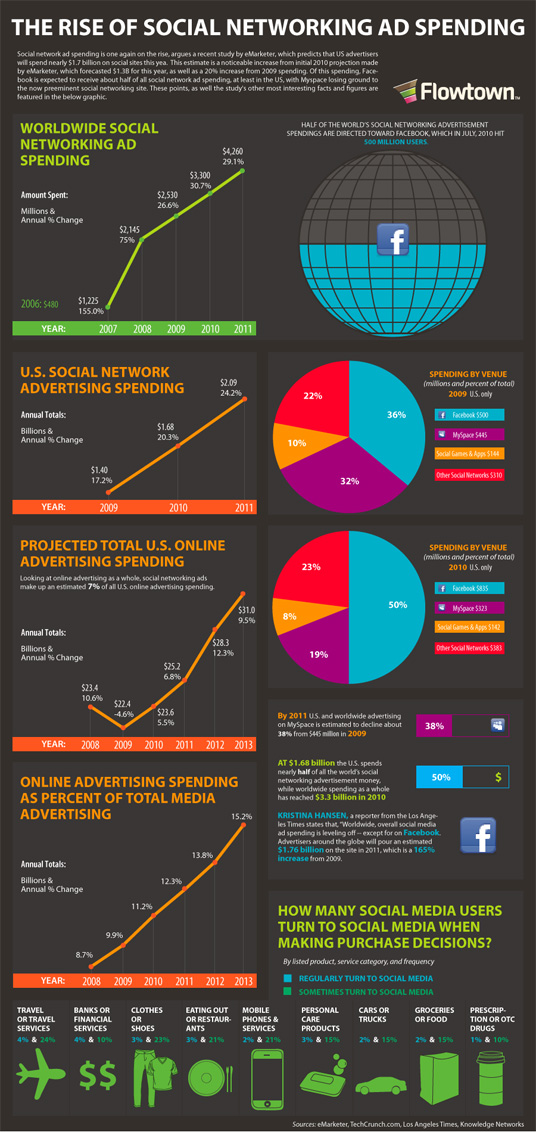The next five years, and estimates social media marketing to grow at an annual rate of 34 percent faster than any other form of online marketing and double the average growth rate of 17 percent for all online mediums. $716 million will be spent on the medium this year, growing to $3.1 billion in 2014. Online advertising will grow from 12 percent of total marketing spend this year to 21 percent by 2014, meaning that offline ad spend will fall. 70% of marketers plan to increase their social media budget by more than 10% in 2011. But what you need to have with you is an effective plan and target areas ready so that you don’t get stuck up in your way. A 490% growth rate is not to be sniffed at, but a total spend of $54 million means social media folks might want to celebrate with a bottle of apple cider and let the PPC management folks celebrate with the good stuff The gradual economic recovery and the growing relevancy of social media in marketers’ are credited for the increase in spending. The market at $1.3 billion back in December.
Social media describes websites that allow users to share content, media. Common examples are the popular social networking sites like Friendster, Facebook, MySpace, etc. Social media also includes YouTube, Photobucket, Flickr, and other sites aimed at photo and video sharing. News aggregation and online reference sources, examples of which are Digg and Wikipedia, are also counted in the social media bucket. Micro-blogging sites such as twitter can also be included as social media.
Next year, 80% of companies with 100 or more employees are expected to use social-media tools for marketing, up from 73% in 2010 and nearly double the usage rate in 2008 Marketers don’t agree on how much of their marketing budgets they should spend on social media. Surveys indicate that marketers spend 4% to 11% of their online marketing budgets on social media. This wide divergence is indicative of the fact that social-media marketing budgets are spread across multiple departments and groups, and that some types of companies and industries are more advanced than others.
Does that mean that social media is future of marketing and trading, people, marketers, buyers, socialites will just focus on social media for their needs and social media will become the center of attraction in the marketer’s world wherein all of his efforts will be the main focus all around the world of marketing? No wonder social media will presume so much importance that this might even appear in the curriculum of students even in their specialization courses.
Hence the ad spending on social media is gonna be sky high, whatever the trend is today but in future lies immense potential to attract customers and transform potential customers into actual customers for business increasing customers for business.

